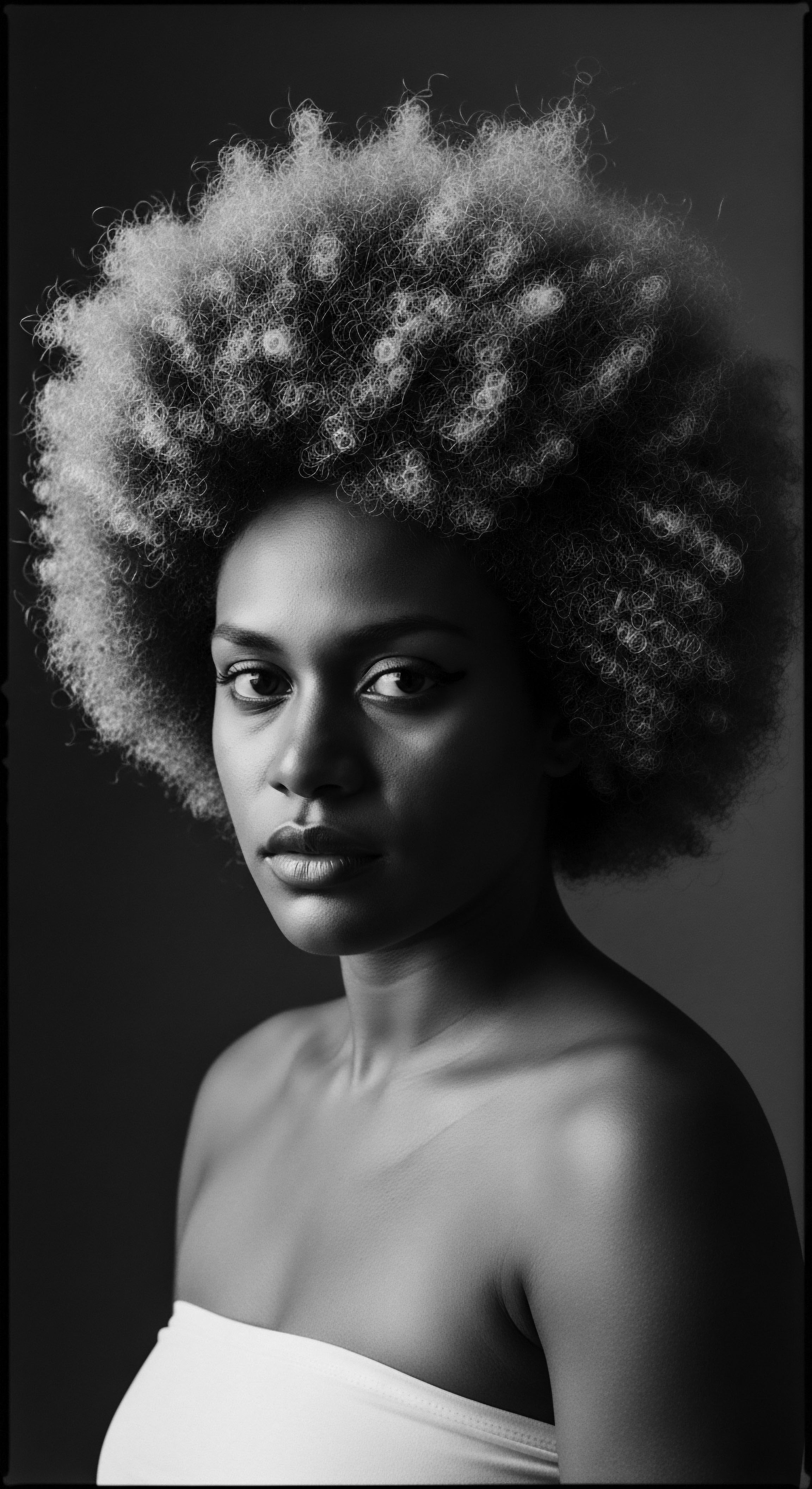
Fundamentals
The conversation surrounding hair, especially textured hair, extends far beyond mere aesthetics or biological structure. It whispers of stories, echoes of ancient wisdom, and silent declarations of self. At its heart lies the profound meaning of Symbolic Hairwear, an interpretation that invites us to recognize hair not as a simple physical attribute, but as a living archive, a sacred conduit of memory, identity, and spirit, especially within Black and mixed-race communities. This concept acknowledges that every strand, every coil, every braid, carries a weight of cultural significance, a heritage passed down through generations.
For many with textured hair, the choice of a particular style or adornment is never without purpose. It often serves as a silent language, communicating affiliations, beliefs, and status without uttering a word. This understanding, that hair is an integral part of one’s being, is deeply rooted in ancestral practices where hair was revered as the most elevated part of the body, a spiritual antenna connecting individuals to the divine and to their lineage. Hairdressing, in these ancient traditions, transcended routine grooming; it transformed into a communal ritual, a moment of intimate connection and shared wisdom.
Symbolic Hairwear is the profound recognition that textured hair, in its myriad forms and adornments, acts as a living cultural text, communicating identity, heritage, and spiritual connection.
The care given to hair, the techniques employed, and the adornments chosen all contribute to its symbolic weight. From the intricate braiding patterns seen in ancient African societies, signifying tribal identification, marital status, age, or rank, to the protective styles adopted through eras of hardship, hair has consistently reflected profound truths about a person’s life journey. This inherent connection to life’s unfolding story means that the approach to hair care often mirrors a broader philosophy of wellbeing, one that honors the body as a temple and every part of it as sacred.
Understanding Symbolic Hairwear begins with appreciating the biological marvel that is textured hair itself. Each curl, wave, and coil possesses a unique architectural design, an inherent strength, and a particular need for gentle, intentional care. This biological reality, often misunderstood or devalued in dominant beauty narratives, holds its own deep lessons, affirming the beauty and resilience that nature has bestowed.
When we speak of Symbolic Hairwear, we are acknowledging this foundational biology as intertwined with cultural expression. The very structure of the hair, how it grows from the scalp, and its natural inclinations, all contribute to the forms it can take and the messages it can carry.
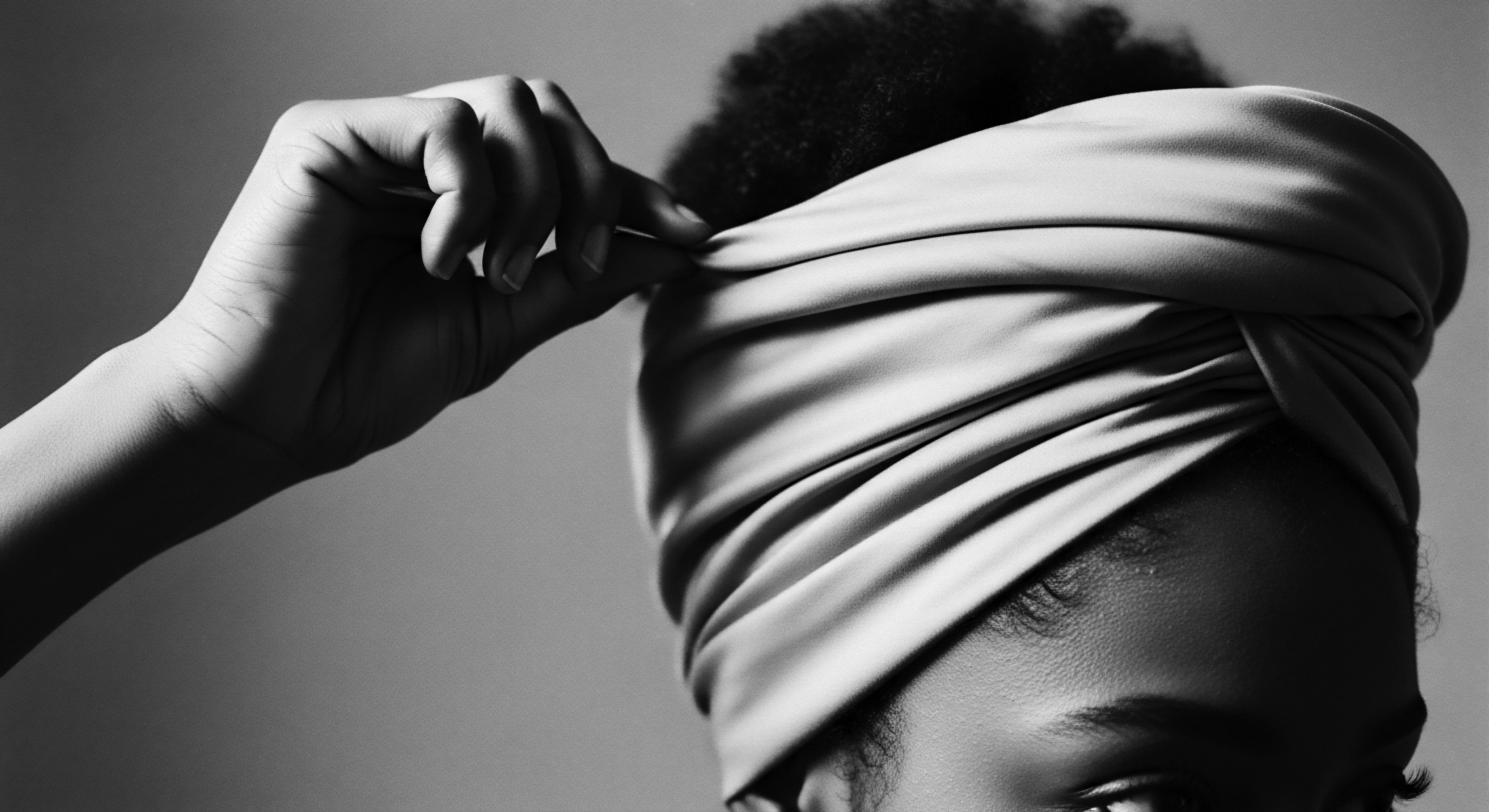
The Origins of Hair’s Voice
Long before written histories, hair served as a primary visual communicator in African societies. Anthropological evidence suggests that hairstyles were so detailed and widely understood that they functioned as a complex social code. Individuals could discern a person’s place within the community, their family ties, their spiritual leanings, or even their personal history simply by observing their hair.
- Communal Grooming ❉ Hair care was not a solitary task but often a shared experience, strengthening communal bonds and passing knowledge from elders to younger generations.
- Status Markers ❉ Elaborate styles, often with specific adornments, indicated social standing, wealth, or readiness for life events like marriage or initiation rites.
- Spiritual Significance ❉ The head, as the body’s highest point, was considered a portal to the divine, making hair a sacred element often styled during rituals or to honor deities.
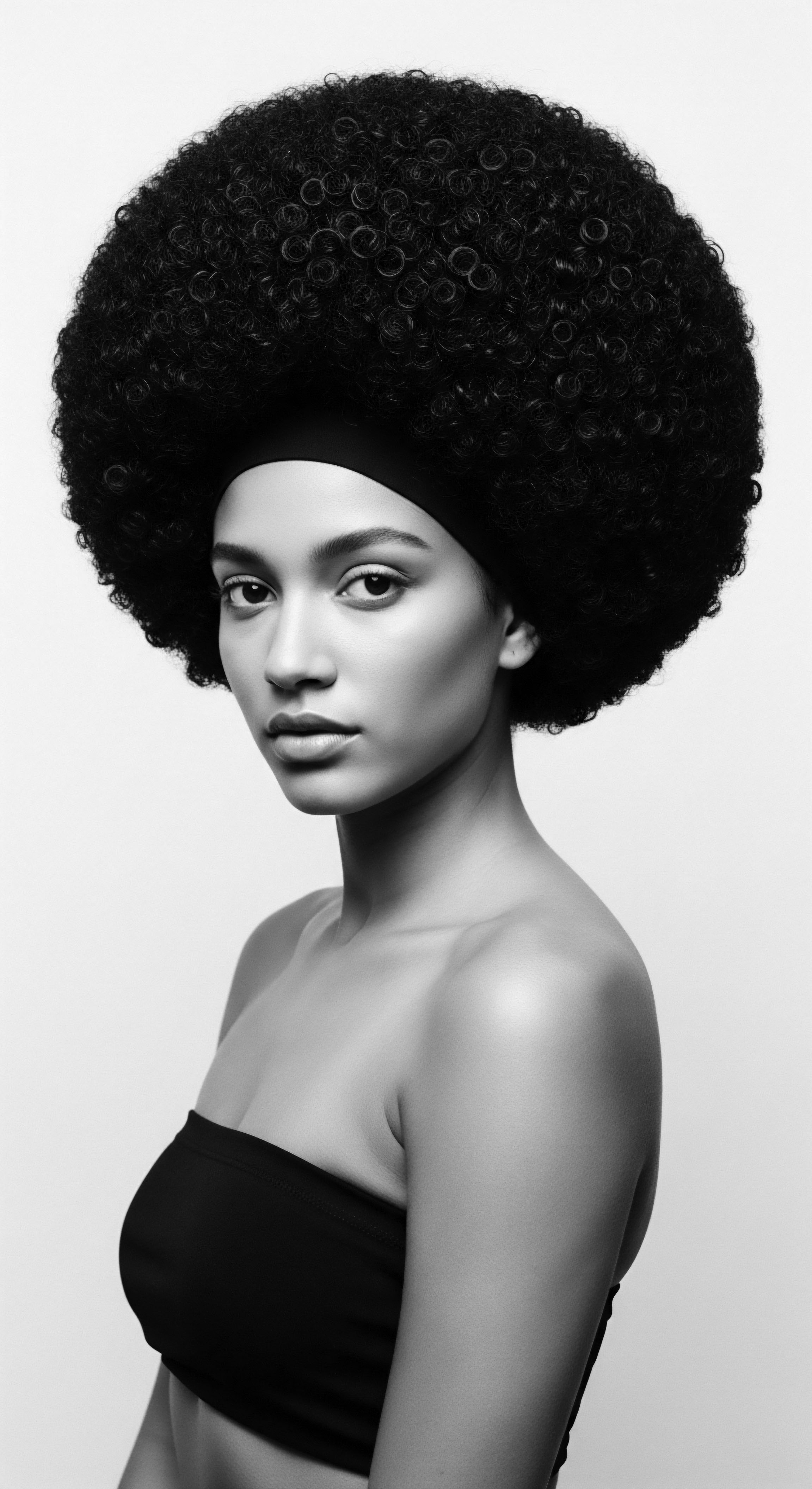
Intermediate
Moving beyond the foundational understanding, the intermediate meaning of Symbolic Hairwear reveals itself as a dynamic testament to human adaptability, creativity, and the enduring power of cultural memory. This concept extends beyond mere recognition; it speaks to the conscious and subconscious ways textured hair has been, and continues to be, utilized as a tool for communication, resistance, and identity preservation across the African diaspora and in mixed-race hair experiences. Here, the ancestral whispers become louder, revealing how deep knowledge of hair transcended continents and centuries.
In examining the journey of Symbolic Hairwear, one cannot overlook the profound impact of historical adversity. Periods of enslavement and colonization sought to strip individuals of their cultural markers, including their hair traditions. The forced shaving of heads upon arrival in the “New World” was a deliberate act of dehumanization, an attempt to erase identity and cultural ties.
Yet, even in the face of such profound oppression, the spirit of Symbolic Hairwear persevered. Enslaved Africans ingeniously adapted their grooming practices, transforming acts of forced conformity into subtle, yet powerful, forms of resistance and covert communication.
Symbolic Hairwear represents a profound defiance, where every intentional style, twist, or adornment becomes a testament to resilience and an act of cultural reclamation.
Consider the ingenious historical example of the Tignon Laws in 18th-century Louisiana. Enacted in 1786 by Governor Esteban Rodríguez Miró, these laws mandated that free Black women in New Orleans cover their hair with a ‘tignon’ (a head scarf or wrap). The intention behind this legislation was overtly oppressive ❉ to control Black women, diminish their perceived status, and prevent them from appearing to compete with white women for social standing by concealing their often elaborate and beautiful hairstyles. However, these women, with remarkable resilience and artistry, transformed the very instrument of their oppression into a new form of Symbolic Hairwear.
They used vibrant, luxurious fabrics, adorned their headwraps with jewels and intricate knots, turning a symbol of subjugation into a vibrant statement of elegance, defiance, and cultural pride. This act of turning an imposed restriction into an opportunity for self-expression speaks volumes about the intrinsic human need for identity and the powerful role hair played in asserting that identity. The tignon, initially a badge of enforced social differentiation, became a crown of creative resistance.
This historical account underscores a recurring pattern ❉ when dominant cultures attempt to suppress the expressive capacity of textured hair, the spirit of Symbolic Hairwear finds new, inventive avenues for assertion. It is a testament to the fact that cultural heritage, especially as it relates to hair, is not easily extinguished; it adapts, evolves, and resurfaces with renewed vigor. The practice of hair grooming, therefore, is not merely about physical maintenance; it embodies a continuous dialogue with the past, a commitment to preserving ancestral knowledge, and a bold declaration of presence in the contemporary world.

The Intergenerational Dialogue of Care
The care of textured hair itself is often a practice deeply rooted in ancestral wisdom. Before the advent of modern cosmetic science, communities relied on natural ingredients and techniques passed down through generations. These rituals were steeped in an understanding of the hair’s unique structural properties and its need for moisture, protection, and gentle handling. The knowledge of how to detangle coils with patience, how to seal in moisture with natural oils, or how to create styles that protect fragile ends from environmental aggressors, often resonates with what contemporary hair science now affirms.
| Ancestral Practice/Ingredient Hair Oiling/Greasing |
| Cultural Context / Significance Long-standing tradition across many African communities, providing moisture and scalp nourishment. Often a communal activity. |
| Contemporary Scientific Link / Benefit Sebum production in textured hair often struggles to travel down the coil, leaving ends dry. Oils create a protective barrier, reducing moisture loss and breakage. |
| Ancestral Practice/Ingredient Protective Styling (Braids, Twists) |
| Cultural Context / Significance Used for centuries in various African cultures to signify status, group affiliation, and as a practical means to manage hair. |
| Contemporary Scientific Link / Benefit Minimizes manipulation, friction, and environmental exposure, reducing breakage and promoting length retention for delicate textured strands. |
| Ancestral Practice/Ingredient Natural Cleansers (e.g. Yucca Root) |
| Cultural Context / Significance Native American traditions utilized plants like yucca root for gentle cleansing without harsh stripping. |
| Contemporary Scientific Link / Benefit Contains saponins, natural surfactants that cleanse effectively while preserving the hair's natural oils, supporting scalp health and moisture balance. |
| Ancestral Practice/Ingredient Herbal Rinses/Pastes (e.g. Chebe Powder, Amla) |
| Cultural Context / Significance Specific herbs and powders, like Chebe from Chad or Amla from India, have been used for centuries to strengthen hair and promote growth. |
| Contemporary Scientific Link / Benefit Modern research investigates their properties, often revealing antioxidants, vitamins, and minerals that nourish the scalp and hair shaft. |
| Ancestral Practice/Ingredient These cross-cultural practices underscore a timeless wisdom concerning hair health, with contemporary science often providing a deeper comprehension of their underlying mechanisms. |
The communal act of hair styling, as observed in pre-colonial African societies, served as a powerful social glue, strengthening family bonds and transmitting cultural lore. This echoes in modern times, where styling sessions continue to be moments of shared experiences, storytelling, and generational learning within Black families. The practical application of care becomes a vehicle for cultural transmission, reinforcing the understanding of Symbolic Hairwear as a living heritage.
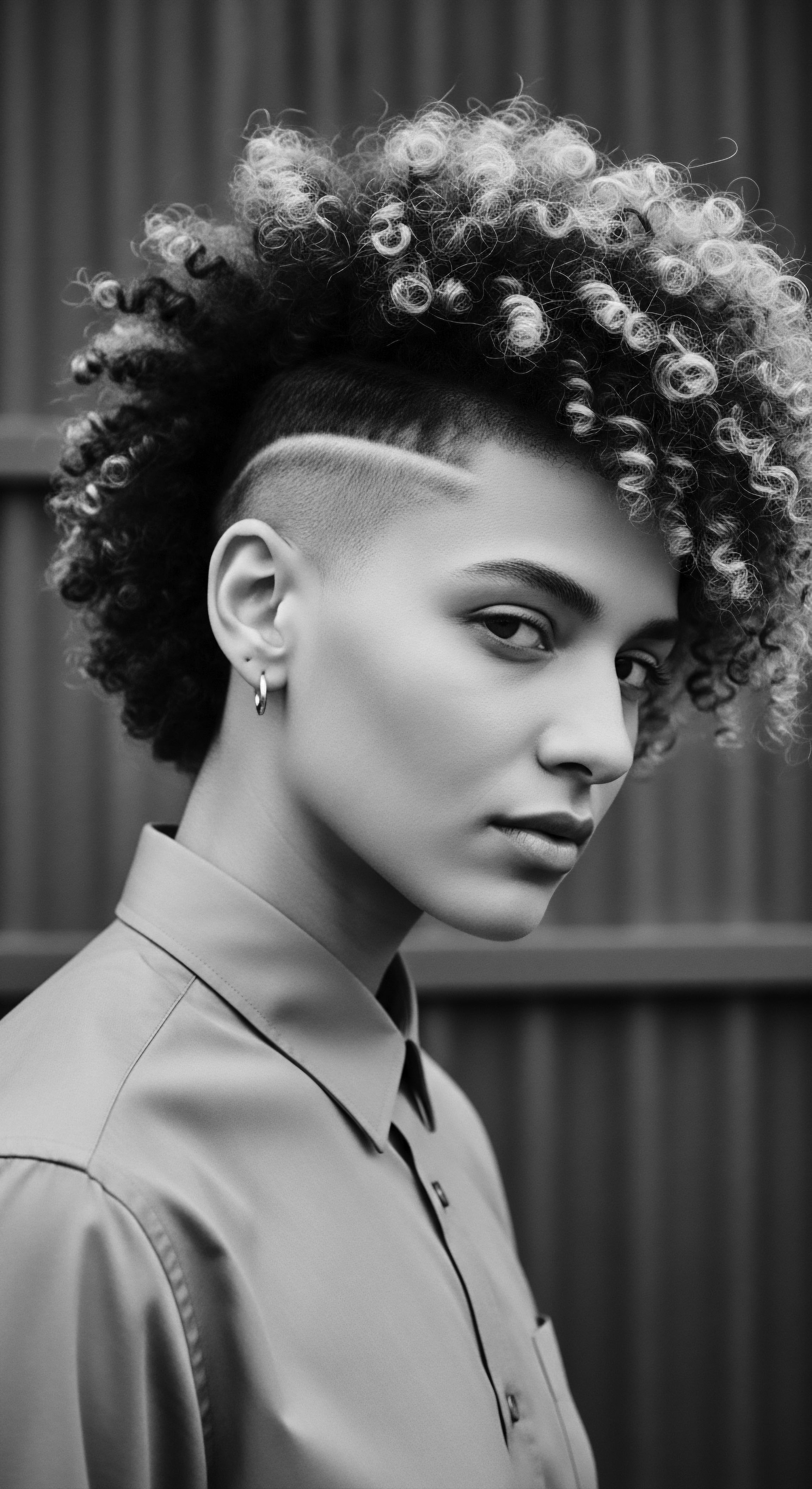
The Evolution of Visual Language
As communities adapted to new environments and challenges, so too did the visual language of Symbolic Hairwear. From the subtle nuances of braid patterns used as maps for escape during enslavement to the defiant rise of the Afro during the Black Power Movement of the 1960s, hair has consistently played a central role in socio-political statements. The Afro, in particular, became a powerful symbol of Black pride, self-acceptance, and resistance against Eurocentric beauty standards. This historical shift underscores the idea that Symbolic Hairwear is not static; it responds to and shapes the collective identity of a people through time.
The choices made about hair reflect not only individual preferences but also a broader cultural and historical context. The journey from traditional styles to chemically straightened hair, driven by societal pressures, and the subsequent resurgence of the natural hair movement, all stand as testaments to the continuous negotiation of identity through Symbolic Hairwear. This ongoing dialogue between history, personal choice, and collective identity highlights the profound nature of hair as a symbolic medium.
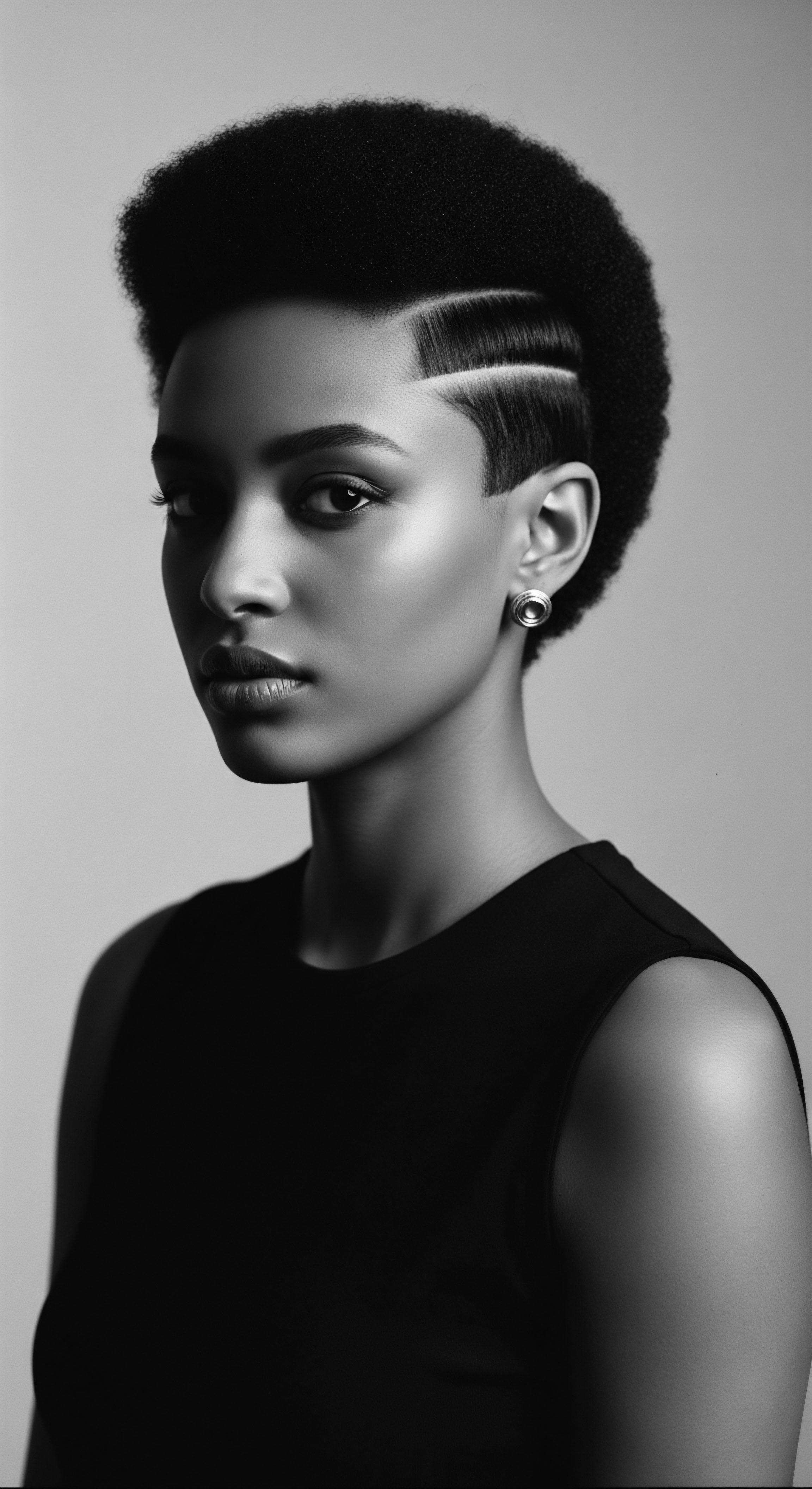
Academic
The academic elucidation of Symbolic Hairwear transcends superficial stylistic observations, positioning it as a complex, multi-dimensional construct deeply rooted in the biopsychosocial experiences of individuals, particularly within the Black and mixed-race diaspora. This rigorous interpretation acknowledges that hair is not merely an integumentary appendage; it functions as a highly potent semiotic system, a visual lexicon through which socio-cultural identities, historical narratives, and epistemological frameworks are articulated, contested, and preserved. To fully grasp its scope, one must engage with interdisciplinary perspectives, drawing from anthropology, sociology, psychology, and even the biophysics of hair itself, to discern the intricate interplay of forces that imbue hair with such profound meaning.
The very architecture of textured hair, with its unique helical structure, varying curl patterns, and susceptibility to environmental factors, dictates particular care regimens that have, over millennia, informed and sustained traditional grooming practices. This elemental biology underpins a specific knowledge system passed down through generations. For instance, the tight coiling of Afro-textured hair offers a natural thermoregulatory advantage in hot climates, a scientific observation that echoes ancestral practices of protective styling. Tina Lasisi’s Ph.D.
research, involving heat-sensing models with various human hair wigs, revealed that tightly curled hair effectively shields the scalp from solar radiation while facilitating heat release, a testament to its adaptive evolutionary design. This scientific validation provides a compelling bridge between biophysical reality and long-standing cultural practices, demonstrating that ancestral wisdom often aligns with empirical understanding.
Symbolic Hairwear is a powerful locus of cultural negotiation, a silent language spoken through texture, style, and adornment, continually reflecting and reshaping Black and mixed-race identities across historical epochs.
From an anthropological standpoint, hair has consistently functioned as a non-verbal communicative medium, articulating affiliations that span tribal identity, social hierarchy, marital status, and spiritual devotion in pre-colonial African societies. Sieber and Herreman’s work (2000), as cited by ResearchGate, underscores how African hairstyles served to communicate one’s tribal affiliation, leadership role, social status, and even the gods worshipped. This intricate system of visual codes transformed the mundane act of grooming into a sophisticated practice of cultural inscription.
The communal nature of hair dressing, a practice still prevalent in many diasporic communities today, served not only practical purposes but also reinforced social cohesion, fostered intergenerational learning, and acted as a crucible for shared cultural memory. This collective engagement in hair care, from selecting specific herbs for conditioning to meticulously braiding intricate patterns, reinforces the social embeddedness of Symbolic Hairwear.
The historical rupture of the transatlantic slave trade violently disrupted these established practices, yet paradoxically, it also catalyzed new forms of Symbolic Hairwear rooted in resilience and resistance. The act of forcibly shaving heads upon arrival in the Americas was a deliberate attempt to sever cultural ties and strip individuals of their identity, a dehumanizing strategy that targeted the very essence of Symbolic Hairwear. However, the innate human drive for self-expression and cultural continuity led to inventive adaptations. The story of the Tignon Laws in Louisiana (1786) offers a salient historical case study of this dynamic.
These sumptuary laws, designed to control and differentiate free women of African descent by compelling them to cover their hair, inadvertently sparked an aesthetic and political counter-movement. Instead of concealing their identity, these women transformed the mandated headwrap into a statement of defiant elegance, adorning their tignons with vibrant colors, luxurious fabrics, and elaborate arrangements. This transformation exemplifies the resilience inherent in Symbolic Hairwear ❉ an imposed restriction was transmuted into a powerful cultural artifact, a tangible declaration of dignity and resistance in the face of systemic oppression.
Sociologically, Symbolic Hairwear has become a battleground for identity politics and an indicator of prevailing beauty standards. The historical imposition of Eurocentric aesthetic ideals, which privileged straight, fine hair, led to widespread hair discrimination, often termed ‘textureism.’ This phenomenon, prevalent from the era of enslavement to contemporary workplaces and educational institutions, has had profound psychological and socio-economic consequences for Black women and girls. A 2020 study by Duke University found that Black women with natural hairstyles were perceived as less professional, less competent, and less likely to be recommended for job interviews compared to candidates with straight hair, who were viewed as more polished. This empirical data underscores the tangible impact of Symbolic Hairwear on lived experiences, highlighting how hair choices can influence opportunities and perpetuate systemic bias.
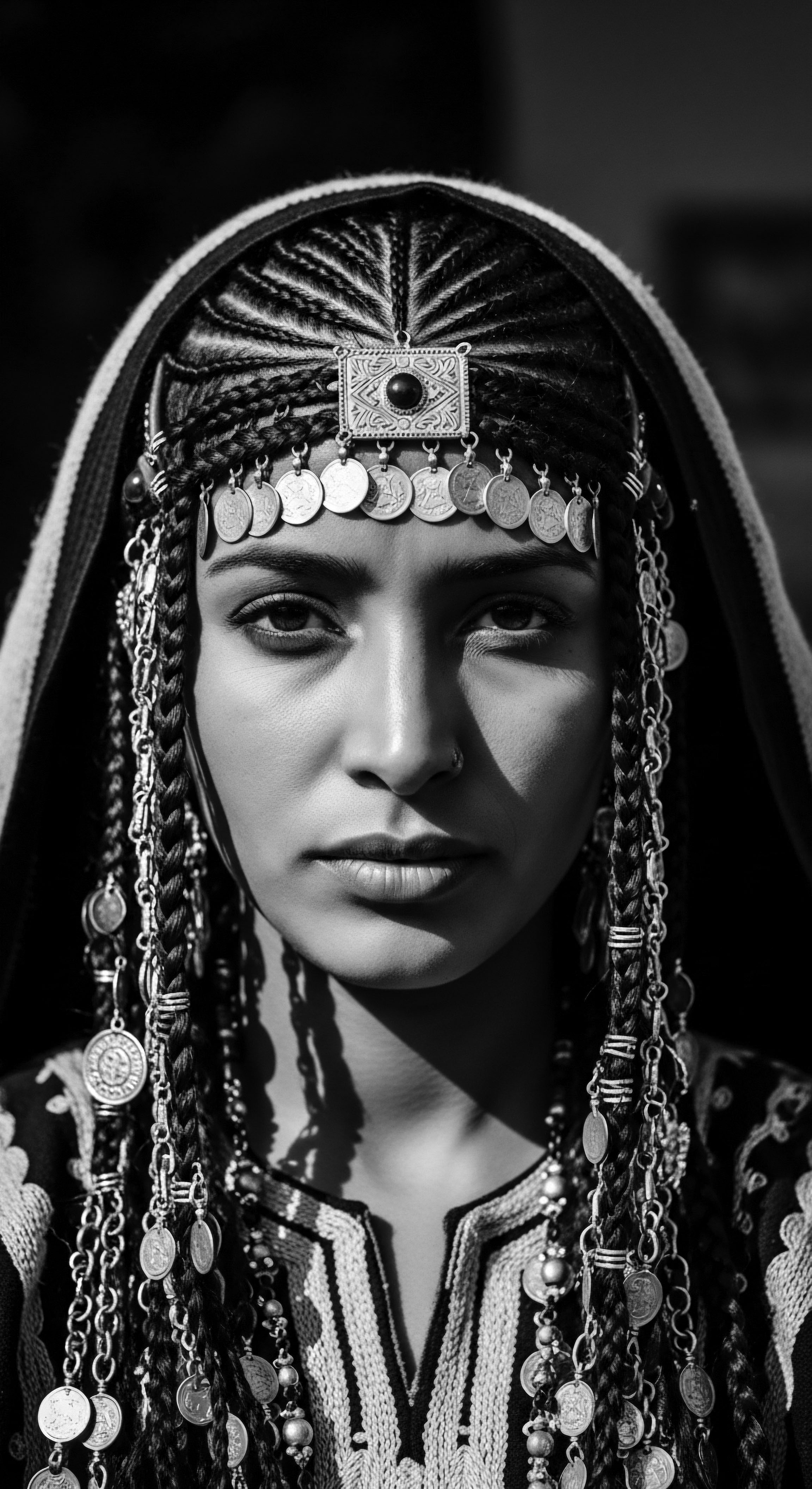
The Psychology of Strands and Self
The psychological dimensions of Symbolic Hairwear are multifaceted. For many Black women, their hair is inextricably linked to their self-esteem, self-perception, and racial identity. The pressure to conform to dominant beauty standards often led to practices like chemical relaxing or straightening, which, while offering perceived social acceptance, could also result in physical damage to the hair and scalp, alongside internalized racism. The Natural Hair Movement, which gained significant traction in the 21st century, represents a collective reclamation of Symbolic Hairwear.
It is a conscious rejection of imposed beauty norms and an affirmation of ancestral connection. This movement encourages individuals to embrace their natural textures, transforming hair from a source of shame or perceived disadvantage into a powerful symbol of self-acceptance, pride, and cultural heritage.
Furthermore, the discourse surrounding Symbolic Hairwear extends to the very act of hair maintenance itself. Beyond the practicalities of care, the rituals associated with cleansing, conditioning, and styling textured hair often become meditative, therapeutic practices. The conscious selection of natural ingredients, the mindful manipulation of strands, and the patient cultivation of healthy hair can serve as a conduit for self-care and a tangible connection to ancestral methods. This mindful approach to hair care reinforces the idea that true wellness encompasses not only physical health but also spiritual and cultural alignment.
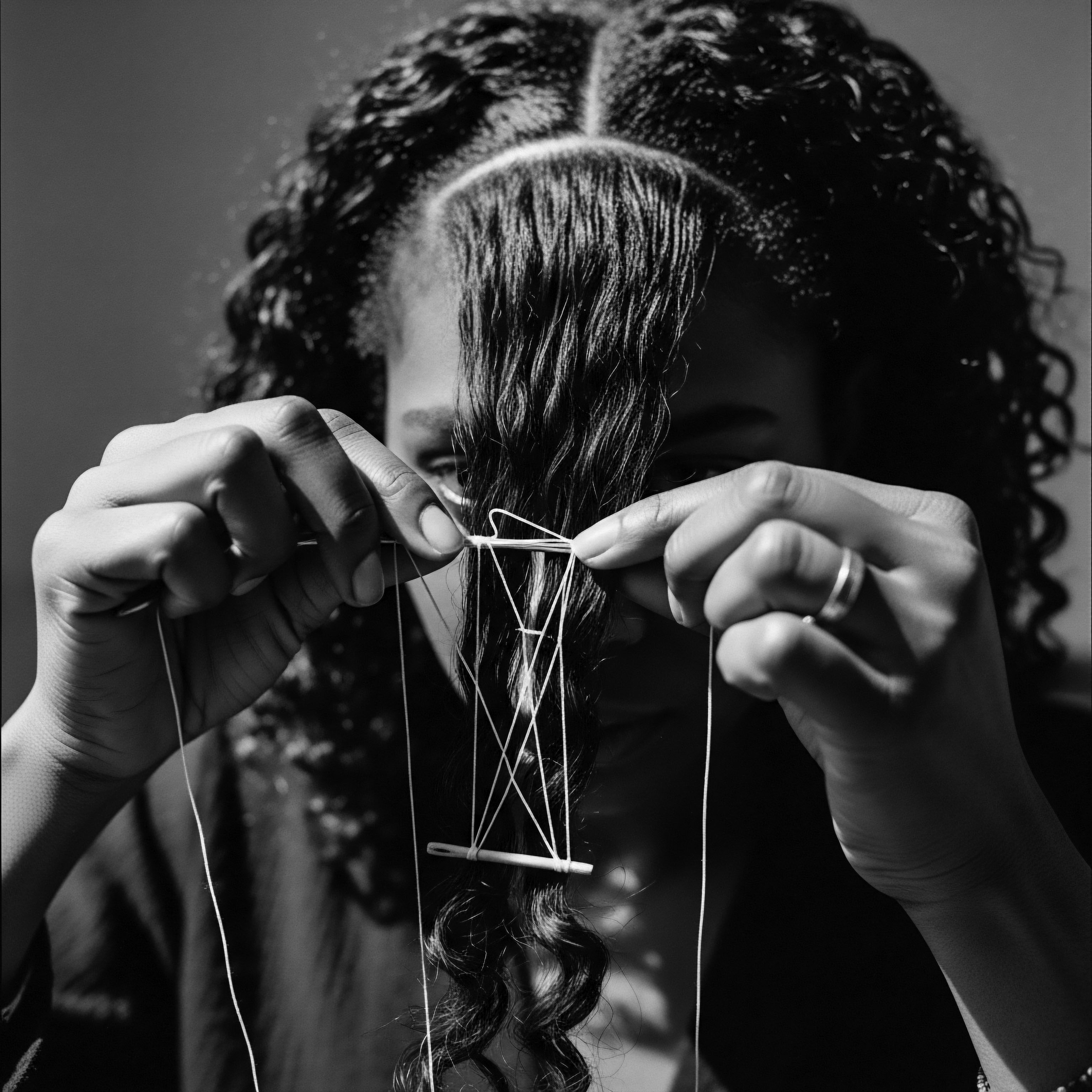
The Unbroken Lineage of Innovation and Expression
The adaptability of Symbolic Hairwear is a testament to its enduring relevance. In pre-colonial Africa, diverse communities developed highly specialized techniques for styling and adorning hair, ranging from complex braiding and weaving to twisting and locking. These methods were not merely aesthetic choices; they were solutions to managing hair health, protecting against environmental elements, and conveying intricate social information.
For instance, the use of hair threading among the Yoruba people, known as “Irun Kiko,” not only created intricate styles but also served to stretch and retain hair length by protecting it from breakage. This ancestral ingenuity reflects an early understanding of hair care principles that continue to inform contemporary practices.
The historical continuity of these practices, even after forced migration and cultural suppression, speaks to their deep embeddedness within collective memory. Cornrows, for example, a braiding technique with roots in ancient Africa, were famously used by enslaved people to create maps for escape, even concealing rice and seeds within the styles for sustenance. This exemplifies how Symbolic Hairwear could be a literal tool for survival, holding practical information alongside its profound symbolic weight. This profound historical example underscores the multi-layered significance hair holds within the heritage of Black and mixed-race communities.
- Communal Memory ❉ Hair practices serve as a living archive, preserving ancestral knowledge and cultural narratives through embodied tradition.
- Resilience and Adaptation ❉ Faced with historical oppression, Symbolic Hairwear demonstrated remarkable adaptability, transforming instruments of control into expressions of defiance.
- Identity Affirmation ❉ For individuals within the diaspora, choosing to wear textured hair naturally or in traditional styles becomes a powerful act of affirming racial and cultural identity.
The scientific examination of hair morphology reveals distinct variations across different ethnic groups, which has implications for understanding specific care needs. African hair, for instance, exhibits a unique elliptical cross-sectional shape and a greater degree of curl, making it more prone to tangling and breakage if not handled with appropriate care. This biological reality validates the ancestral emphasis on protective styling and moisturizing regimens. The scientific insights, when integrated with cultural understanding, deepen our appreciation for the intentionality behind traditional hair care practices, underscoring that these methods were not merely aesthetic but functionally aligned with the hair’s unique biological characteristics.
Symbolic Hairwear, therefore, stands as a powerful emblem of historical continuity, a testament to human agency in the face of adversity, and a vibrant canvas for ongoing cultural expression. Its academic meaning necessitates an interdisciplinary approach, recognizing the interplay of biology, history, sociology, and psychology in shaping this profoundly significant aspect of human identity and cultural heritage. The understanding of Symbolic Hairwear is, in essence, a recognition of the dynamic, living nature of culture itself.
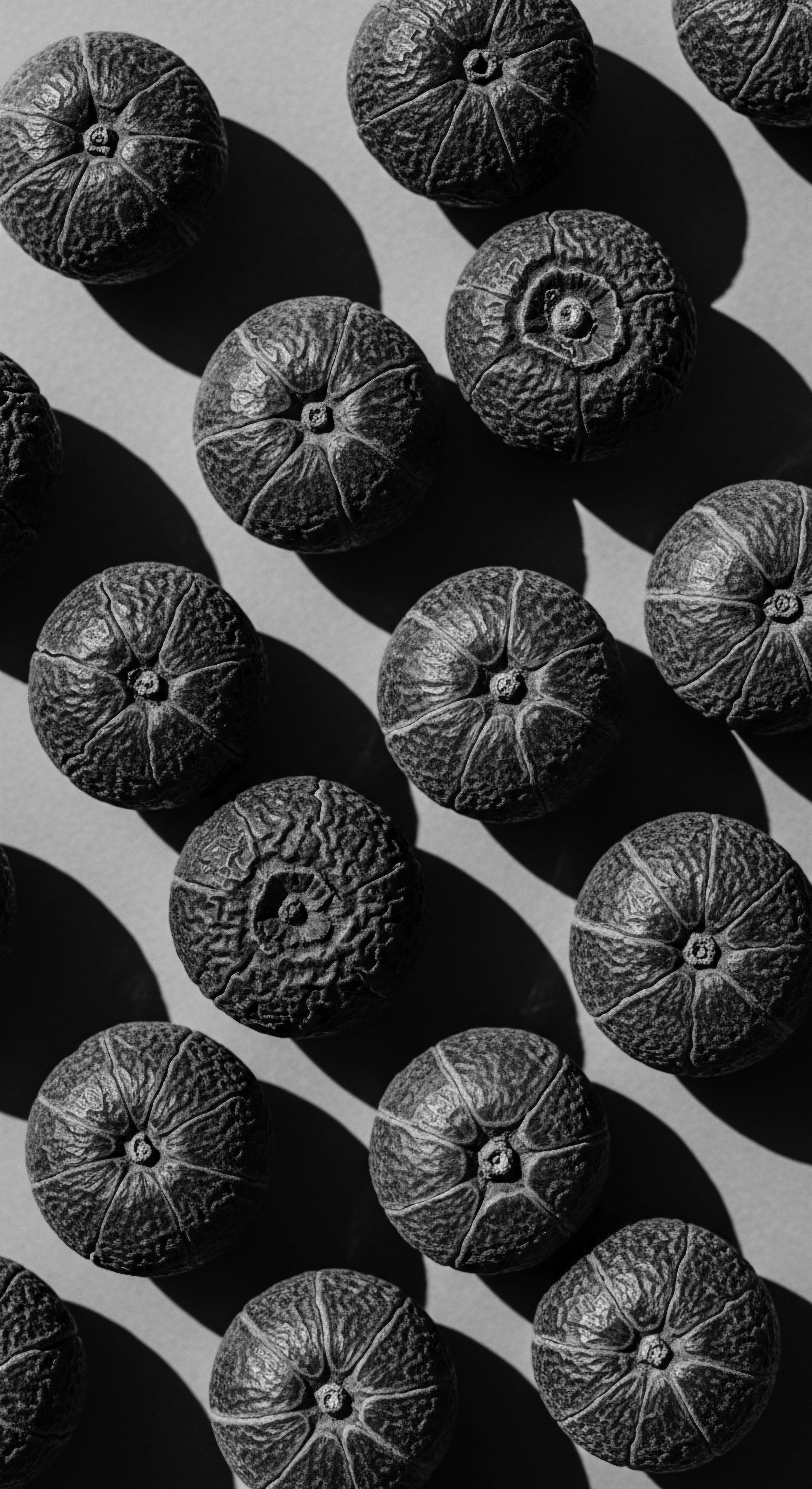
Reflection on the Heritage of Symbolic Hairwear
As we contemplate the myriad aspects of Symbolic Hairwear, we are invited into a deeper understanding of its enduring presence, particularly within the vast and vibrant tapestry of textured hair communities. This understanding transcends the fleeting trends of fashion, settling into the sacred space where ancestral wisdom, resilience, and profound identity coalesce. Each coil, every twist, and every braid bears witness to journeys both individual and collective, holding narratives of survival, adaptation, and glorious self-expression. The echoes from ancient African hearths, where hair was revered as a conduit to the divine and a map of social standing, resonate with unwavering clarity in contemporary practices.
The historical attempts to silence the voice of textured hair, as vividly illustrated by oppressive measures such as the Tignon Laws, ultimately failed to extinguish the spirit of Symbolic Hairwear. Instead, these challenges often catalyzed ingenious acts of reclamation and innovation, transforming symbols of subjugation into beacons of defiance and cultural pride. This ongoing dance between suppression and resurgence speaks volumes about the inherent power residing within the strands themselves—a power that is both biological and deeply spiritual. Our textured hair, therefore, is not merely a part of our physical form; it is a living, breathing testament to an unbroken lineage, a vibrant connection to those who came before us.
The tender threads of ancestral care, passed down through generations, continue to inform our contemporary practices. The mindful application of oils, the patient detangling, and the artistry of protective styles are not just routines; they are rituals that bind us to a heritage of self-respect and holistic wellbeing. Science now illuminates the efficacy of these age-old methods, affirming what our ancestors understood intuitively ❉ that the unique biology of textured hair calls for a specific, nurturing approach. This confluence of ancient wisdom and modern understanding cultivates a profound appreciation for the deliberate, loving attention our hair deserves.
The unbound helix of Symbolic Hairwear continues to voice identity and shape futures. It stands as a vibrant declaration in a world often seeking conformity, a powerful assertion of belonging, beauty, and authenticity. For Black and mixed-race individuals, the choice to wear one’s hair in its natural, symbolic state is an act of profound self-acceptance, a reclaiming of narrative, and a powerful contribution to the collective identity. This journey, from elemental biology to living tradition, culminates in a future where textured hair is universally celebrated as a crown of heritage, a source of unwavering strength, and a constant reminder of the soul within each strand.
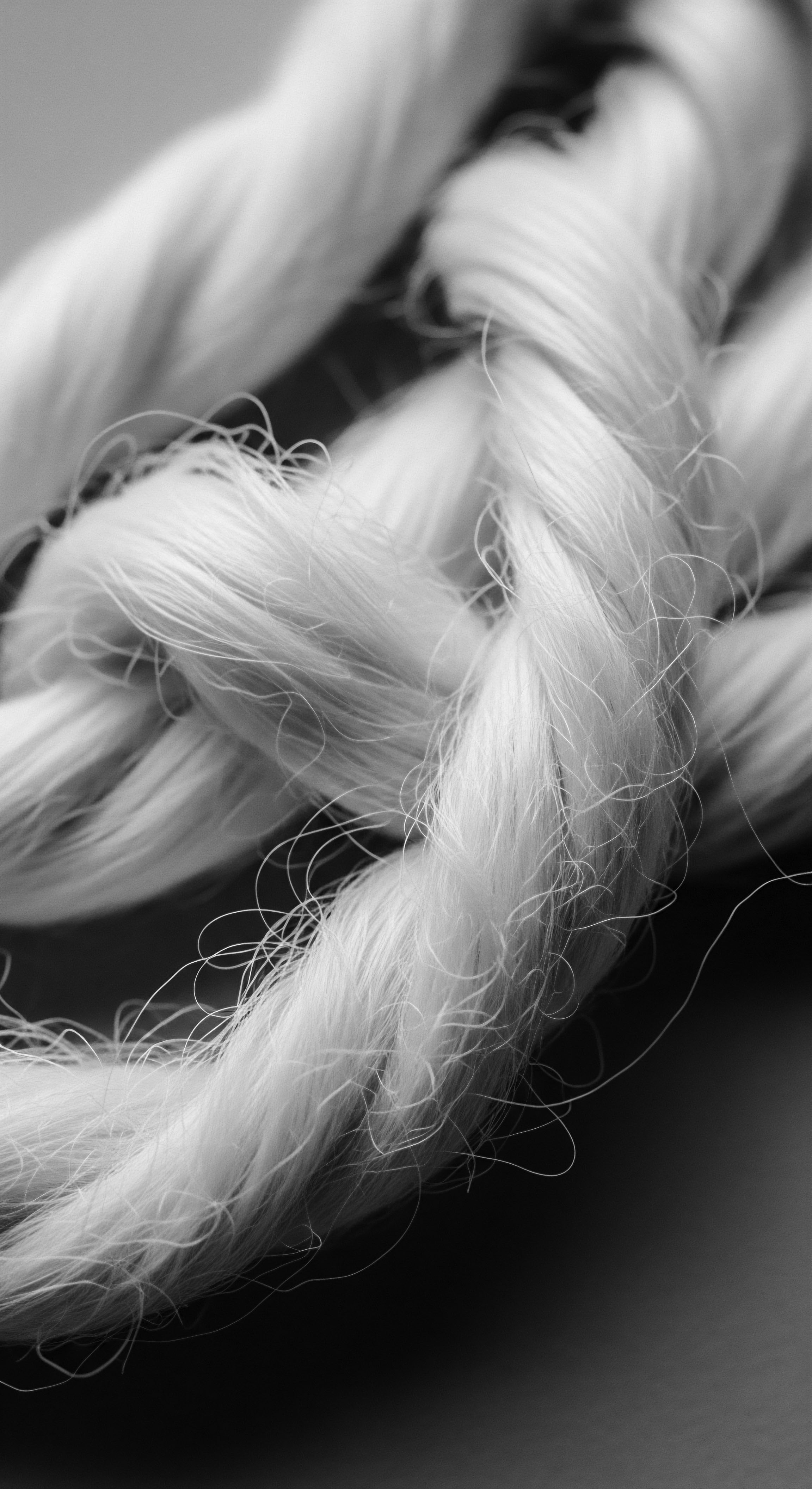
References
- Byrd, Ayana D. and Lori L. Tharps. Hair Story ❉ Untangling the Roots of Black Hair in America. St. Martin’s Griffin, 2001.
- Johnson, Tabora A. and Teiahsha Bankhead. “Hair It Is ❉ Examining the Experiences of Black Women with Natural Hair.” Open Journal of Social Sciences, vol. 2, no. 1, 2014, pp. 86-100.
- Lasisi, Tina A. “The Evolution of Scalp Hair Form in Humans.” Ph.D. Dissertation, Pennsylvania State University, 2021.
- Rosado, Sybil Dione. Nappy Hair in the Diaspora ❉ Exploring the Cultural Politics of Hair Among Women of African Descent. Dissertation, University of Florida, 2007.
- Sieber, Roy, and Frank Herreman, editors. Hair in African Art and Culture. Museum for African Art, 2000.
